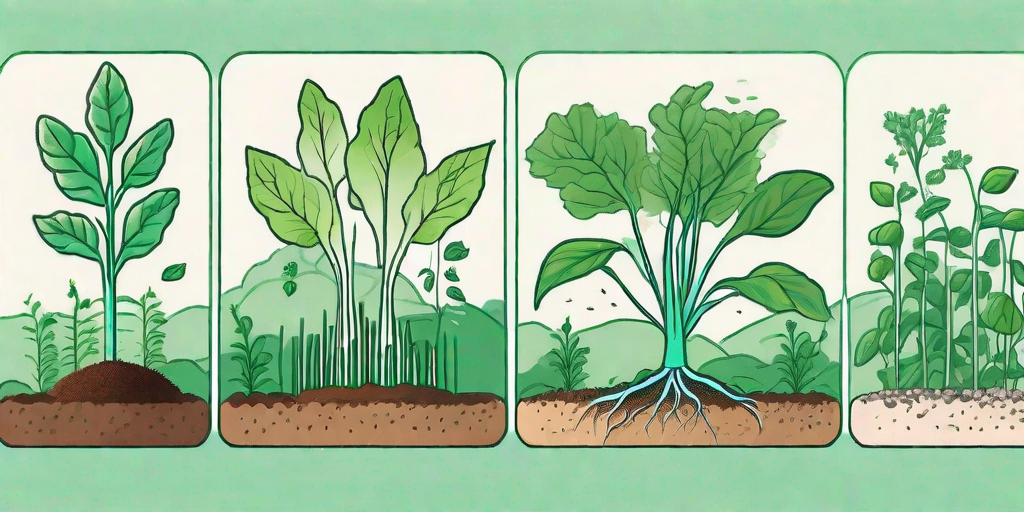
Welcome, green-thumbed enthusiasts and salad lovers alike, to the wonderful world of olericulture. If you're scratching your head and wondering, "Oleri-what now?", don't fret. Olericulture is simply the science of vegetable growing, and today, we're going on a journey from seed to salad. So, grab your trowels and let's dig in!
The Basics of Olericulture
Before we start sowing seeds, let's take a moment to understand what olericulture is all about. It's the branch of horticulture that deals with the production, storage, processing, and marketing of vegetables. It's a science, an art, and a passion all rolled into one. And the best part? You get to eat your results!
Vegetables are classified into several groups based on the part of the plant that is eaten. These include root vegetables, leafy greens, stem vegetables, and alliums. Each group has its own unique growing requirements, which we'll delve into shortly.
Root Vegetables
These are the underground heroes of the vegetable world. Carrots, beets, and potatoes are all root vegetables. They're typically hardy and can be stored for longer periods than other vegetables. Plus, they're packed with nutrients, making them a great addition to any diet.
Root vegetables prefer cooler temperatures and well-drained soil. They're also partial to a bit of sun, so make sure they're not overshadowed by taller plants in your garden.
Leafy Greens
Leafy greens are the supermodels of the vegetable world. They're not just pretty to look at, they're also packed with vitamins and minerals. Think spinach, lettuce, and kale. These veggies are typically quick to grow, making them a great choice for impatient gardeners.
Leafy greens prefer cooler temperatures and moist, well-drained soil. They also need plenty of sunlight, so make sure they're not being shaded by other plants.
From Seed to Salad
Now that we've covered the basics, let's get down to the nitty-gritty of growing your own vegetables. It's a journey that requires patience, care, and a bit of dirt under your fingernails. But trust us, the end result is worth it.
First things first, you'll need to choose your seeds. There are countless varieties to choose from, so think about what you like to eat, your local climate, and the space you have available. Once you've chosen your seeds, it's time to get planting.
Planting Your Seeds
Planting seeds is a delicate process. You'll need to consider the depth and spacing of your seeds, as well as the soil conditions. Most seed packets will provide instructions for planting, but as a general rule, seeds should be planted at a depth twice their size.
Once your seeds are in the ground, it's time to water them. Be gentle here - a harsh stream of water can displace your seeds. A light mist is all they need.
Caring for Your Plants
After planting, your job is to provide your plants with the best possible conditions for growth. This means regular watering, plenty of sunlight, and protection from pests. It's a labor of love, but there's nothing quite like the satisfaction of seeing your plants thrive.
As your plants grow, they may need some additional support. This is especially true for vine plants like tomatoes and cucumbers. A simple trellis or stake can provide the support they need.
Harvesting and Enjoying Your Vegetables
The moment of truth has arrived. Your vegetables are ripe and ready for harvesting. This is the moment you've been waiting for, the culmination of all your hard work. So, how do you know when it's time to harvest?
Harvesting times vary depending on the type of vegetable and the specific variety. Some vegetables, like zucchini and cucumbers, can be harvested when they're still young and tender. Others, like tomatoes and peppers, should be left on the plant until they're fully ripe.
Creating Your Salad
Now for the fun part - creating your salad. There's no right or wrong way to do this. It's all about personal preference. You can keep it simple with a classic lettuce, tomato, and cucumber salad, or get creative with a mix of colorful root vegetables and leafy greens.
Don't forget to add a dressing to enhance the flavors of your vegetables. A simple vinaigrette made with olive oil, vinegar, and a dash of salt and pepper is a classic choice. But feel free to experiment with different flavors and ingredients.
Frequently Asked Questions
What is the best time of year to start a vegetable garden?
The best time to start a vegetable garden depends on your local climate and the type of vegetables you want to grow. As a general rule, most vegetables are planted in the spring after the last frost.
How often should I water my vegetable garden?
Watering frequency depends on several factors, including the type of vegetable, the stage of growth, and the weather. As a general rule, most vegetable gardens need about an inch of water per week.
Can I grow vegetables in containers?
Absolutely! Container gardening is a great option for those with limited space. Just make sure your containers have good drainage and are large enough to accommodate your plants as they grow.
Conclusion
And there you have it, folks. The journey from seed to salad, all wrapped up in a leafy green bow. Olericulture may sound complicated, but it's really just about understanding the needs of your plants and providing the best conditions for them to thrive. So, what are you waiting for? Grab those seeds and get growing!











